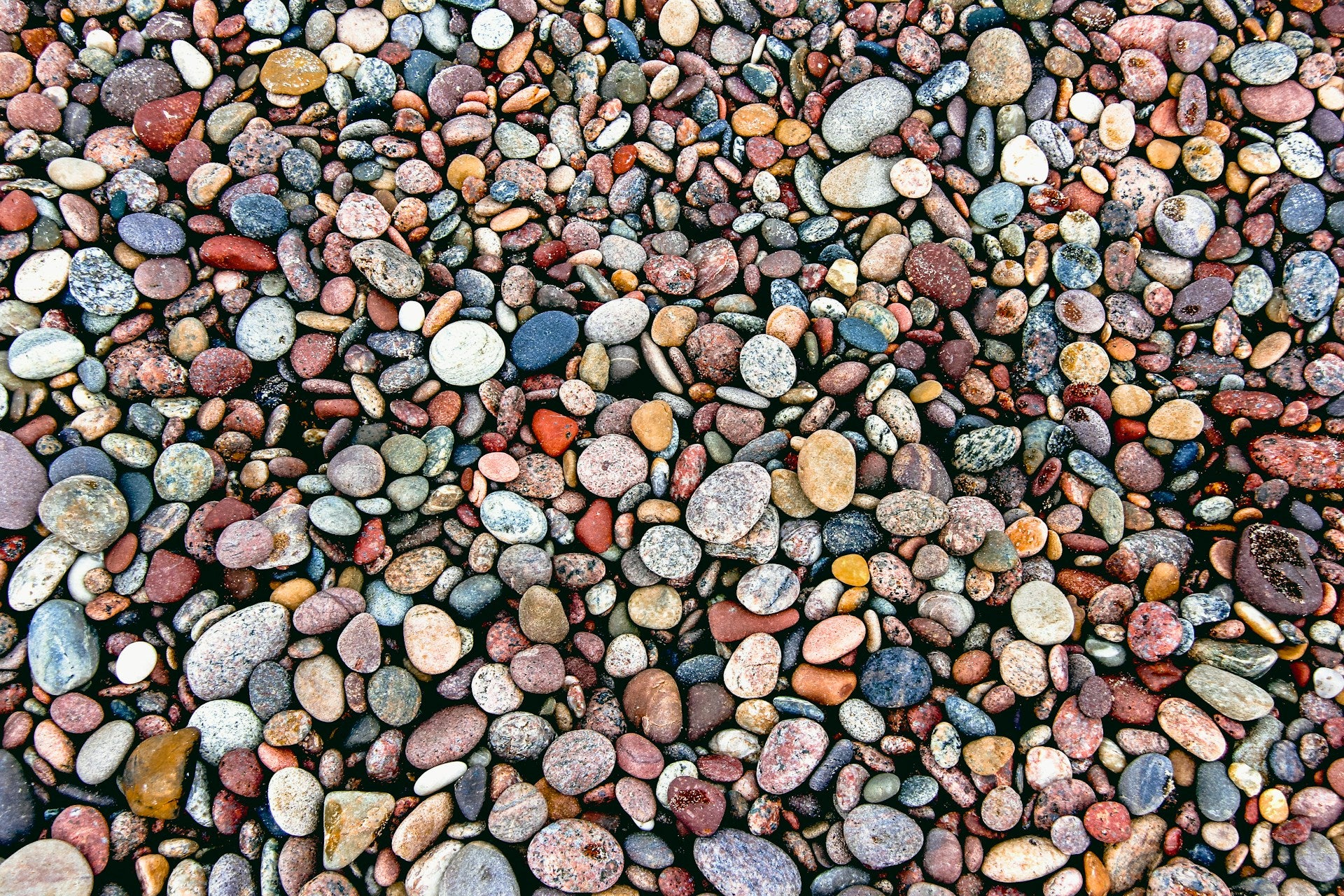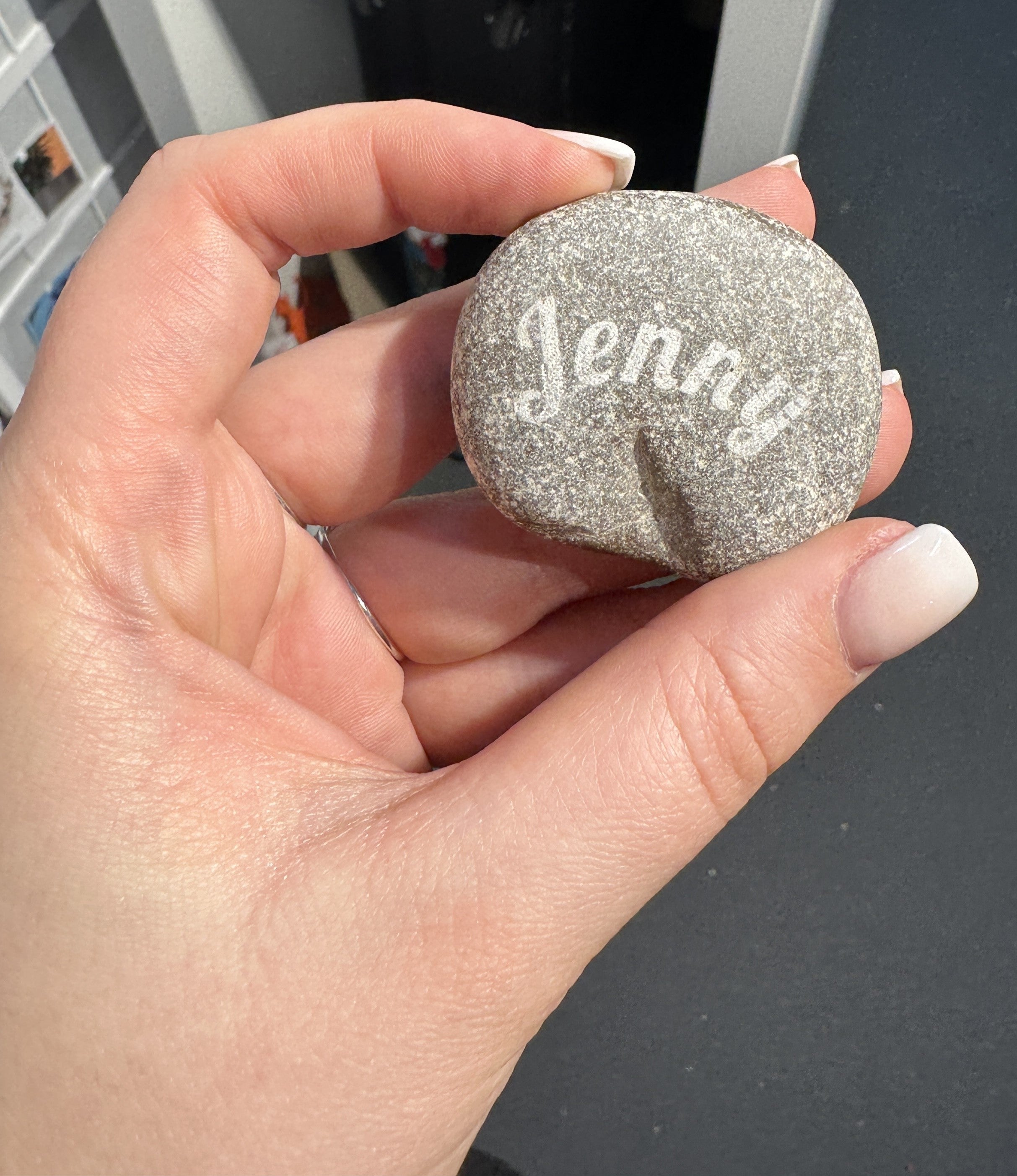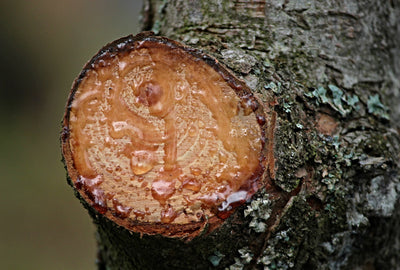The Hidden World of Pebbles: A journey through the secrets of small stones
Welcome to the fascinating world of pebbles, those small, ubiquitous stones that are more than just simple pieces of rock. They are witnesses to the history of the earth, works of art of nature and a source of inspiration for creative people. In this blog post, Mr Beam reveals the secrets of these inconspicuous treasures and invites you to rediscover the diversity and beauty of pebbles.
The fascinating world of pebbles: natural history in the palm of your hand

Pebbles are not just stones; they are the poetry of the earth's history, shaped by the tireless power of nature. These small, rounded stones come from larger masses of rock that have been worked by water and wind over thousands of years until they acquire their characteristic smooth surface. In contrast to their larger relatives, the rubble, which have a rougher surface and a greater variety of shapes, these stones are characterized by their fineness and roundness. Rocks, on the other hand, stand as the monumental ancestors of both, from whose massive bodies both pebbles and rubble once emerged.
The distinction between these three forms is based on size and texture. Pebbles are typically smaller than 2.5 inches, making them handy and often collectible. Rubble, larger and more irregular, is often used as building material or in landscaping. Rocks, the basic building blocks of the earth's surface, tower above both in their sheer mass and immobility. This hierarchy of stones reveals the Earth's dynamic processes that are constantly reshaping the face of our planet. Pebbles, in their humble appearance, are silent witnesses of eternal change, embedded in the history of our world.
From the Majesty of the Mountains to the Pebbles Beneath Your Feet: A Geological Journey
The formation of these stones is a fascinating demonstration of the power of natural processes that continually shape the surface of our planet. Weathering, erosion and deposition are the main players in this never-ending cycle of rock transformation. Weathering breaks the parent rock into smaller pieces, erosion transports these fragments over long distances, and deposition collects them in new locations where they undergo further changes. Over thousands of years, water and wind abrade these pieces of rock until they take on the smooth, round shape we know as pebbles.
These stones are formed from a variety of rock types, each with its own history and composition. Quartz, known for its hardness and resistance to erosion, is a common ingredient. Limestone, a sedimentary rock composed primarily of the mineral remains of marine organisms, also contributes to the diversity of pebbles. These rocks, along with many others, go through the cycle of weathering and erosion to end up as pebbles on beaches, river banks and other sites of deposition. Each stone tells a story of its journey through time and space, from the majestic rock formation from which it once emerged to the small pebble that now lies beneath your feet.
The mosaic of nature: the countless faces of the small stones

The cosmos of pebbles is a kaleidoscope of colors, patterns and textures that hold an infinite variety of shapes and stories. These small works of art, polished by nature, vary in hardness, color and structure depending on their mineral composition and the geological processes that formed them. From deep black to shimmering white, streaked with veins of red, blue or green, each pattern tells of the minerals contained in the rock and the conditions under which the stone was formed.
For collectors, these differences provide an endless source of fascination and challenge. Finding a rare specimen or a stone with an unusual color or pattern is more than a hobby; it is a passion that provides insight into the diversity and beauty of the natural world. Scientists, on the other hand, use this diversity to understand the geological processes that shape our earth. The analysis of rocks can provide information about the history of the earth, about former climate conditions and about the movements of continents.
The small stones serve as a window into the past and as inspiration for the future. Their differences in color, pattern, and hardness are not only aesthetically pleasing, but also scientifically important, providing deep insights into the dynamics of our planet.
From aesthetics to science: The versatile uses of pebbles

The stones are used far beyond the limits of their natural deposits. Their versatility makes them a valued element in numerous areas:
- Gardens and landscaping: Here they serve as decorative elements that line paths, frame beds or act as mulch to retain moisture in the soil and suppress weed growth
- Construction: Due to their strength and weather resistance, pebbles are ideal for designing facades, walls or as an additive in concrete mixes
- Crafts: Pebbles inspire artists and craftsmen to create jewelry, mosaics, sculptures and other artistic creations. Their natural beauty and uniqueness give each work an individual character
- Science and education: In geological research, pebbles are key objects for studying the history of the earth. They help to understand the processes of weathering, erosion and sedimentation. In educational institutions, pebbles are used as visual aids to teach students about the diversity of rock types, the dynamics of the earth's surface and basic geological principles
Pebbles: Collect and explore nature's treasures
Collecting pebbles is an enriching activity that not only takes you into the great outdoors, but also deepens your knowledge of the geological wonders of our earth. To immerse yourself in the world of these stones, start your search on beaches, river banks or in gravel pits, where water and wind work tirelessly to shape these little works of art. Pay attention to the variety of shapes, colors and patterns. Each stone has its own story, and its uniqueness can reveal its origin.
You don't need a laboratory to identify and categorize the collected stones. Simple observations regarding hardness, color and texture can provide important information. Use a magnifying glass to look at the fine details and compare your finds with geological guides or online resources that will help you classify the stones.
Cleaning the pebbles often reveals hidden features hidden beneath a layer of dirt and algae. A gentle wash with water and a soft brush is sufficient in most cases. For stubborn dirt, a weak solution of water and vinegar can work wonders. However, make sure to preserve the natural character of the stone and avoid aggressive cleaning products that could damage the surface.
Creativity knows no limits: crafts with pebbles

The small stones provide a wonderful basis for creative craft projects for people of all ages. Children enjoy simple painting projects where they can use their imagination and transform the stones into live animals, colorful patterns or even small works of art. Adults, on the other hand, find a source of relaxation and creative expression in more sophisticated craft projects, such as creating mosaics, designing garden ornaments, or even making unique jewelry pieces.
When choosing the right pebbles for your project, you should pay attention to shape, size and color:
- Smooth, flat stones are best for painting projects because they provide a solid painting surface
- For mosaic or garden projects, stones of different sizes and shapes are interesting to create depth and texture
- Color choices can accent a project or highlight certain designs
Crafting with these stones requires creativity as well as suitable materials and tools. Basic craft supplies such as brushes, paints and glue are essential. For more specific projects such as engraving pebbles, the Mr Beam laser cutter offers an innovative way to create precise and detailed designs. The use of this tool opens up new dimensions of personalization by allowing images, words or complex patterns to be engraved directly on the surface of the stones. Many other materials can also be processed, such as concrete, slate or wood.

Stones Tell Stories: The Cultural Significance of Pebbles Worldwide
The stones carry a deep symbolic meaning that is reflected in the traditions and stories of different cultures around the world. They serve as a link between the past and the present, between the earthly and the spiritual.
In many cultures, these stones symbolize stability, eternity and the tireless power of nature. They are used in ritual practices to promote protection, healing and prosperity. In Japanese garden art, carefully placed pebbles represent water or islands, and as part of Zen gardens they promote meditation and inner peace.
They also play a role in the story as tools and weapons, a basis for creating art, and a medium for play. They served as primitive tools for early humans, as slingshot ammunition in ancient wars, and as material for prehistoric art.
In modern times, pebbles are used in cultural rituals, such as memorials where they are placed on gravestones to show respect and remembrance of the deceased. This practice, deeply rooted in Jewish traditions, symbolizes the eternity and immutability of memory.
Through their diverse uses and symbolic meanings, pebbles bridge the gap between the natural and the man-made, between the physical and the metaphysical. They tell stories of civilizations long gone and remind us of the enduring presence and influence of nature in our daily lives.
The fascination with pebbles: A final thought

These stones are more than just simple stones; they are little wonders of nature that tell stories and offer inspiration. Hopefully this blog post has sparked your interest in exploring the world of pebbles and gaining a new appreciation for the little things in nature. Mr Beam invites you to discover the fascination of these inconspicuous treasures and perhaps get creative yourself. The world of stones is full of surprises - it's time to explore them!



